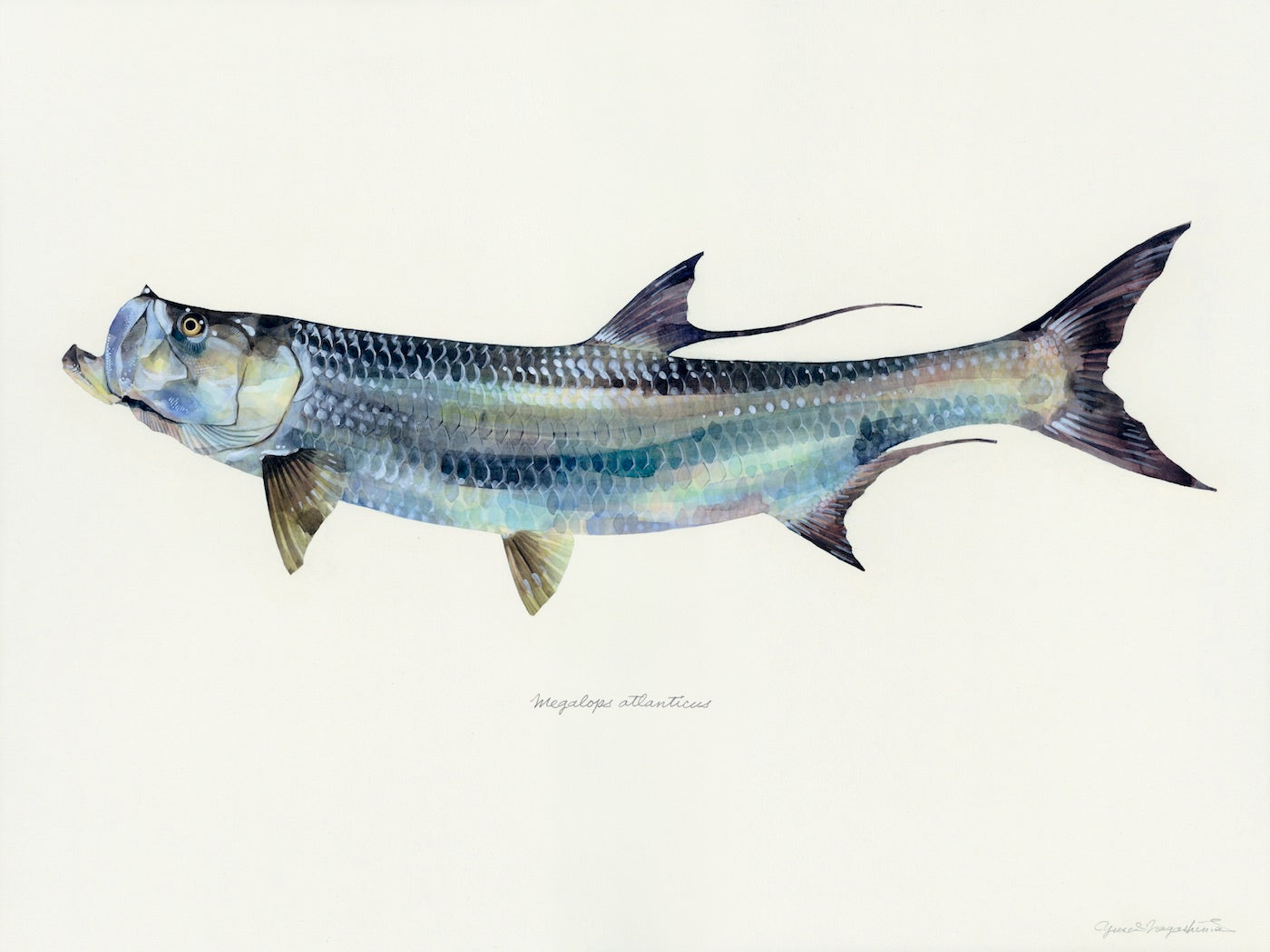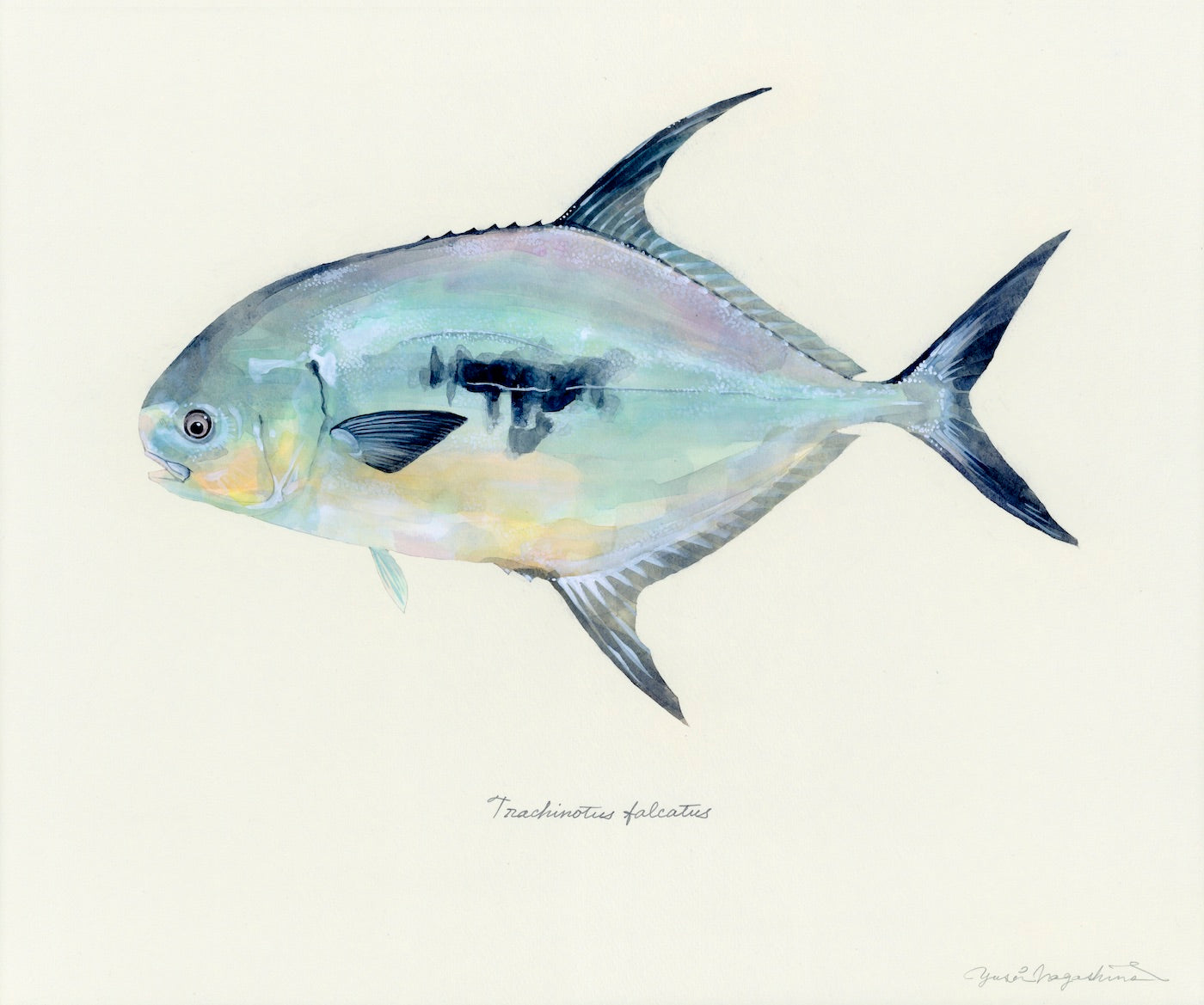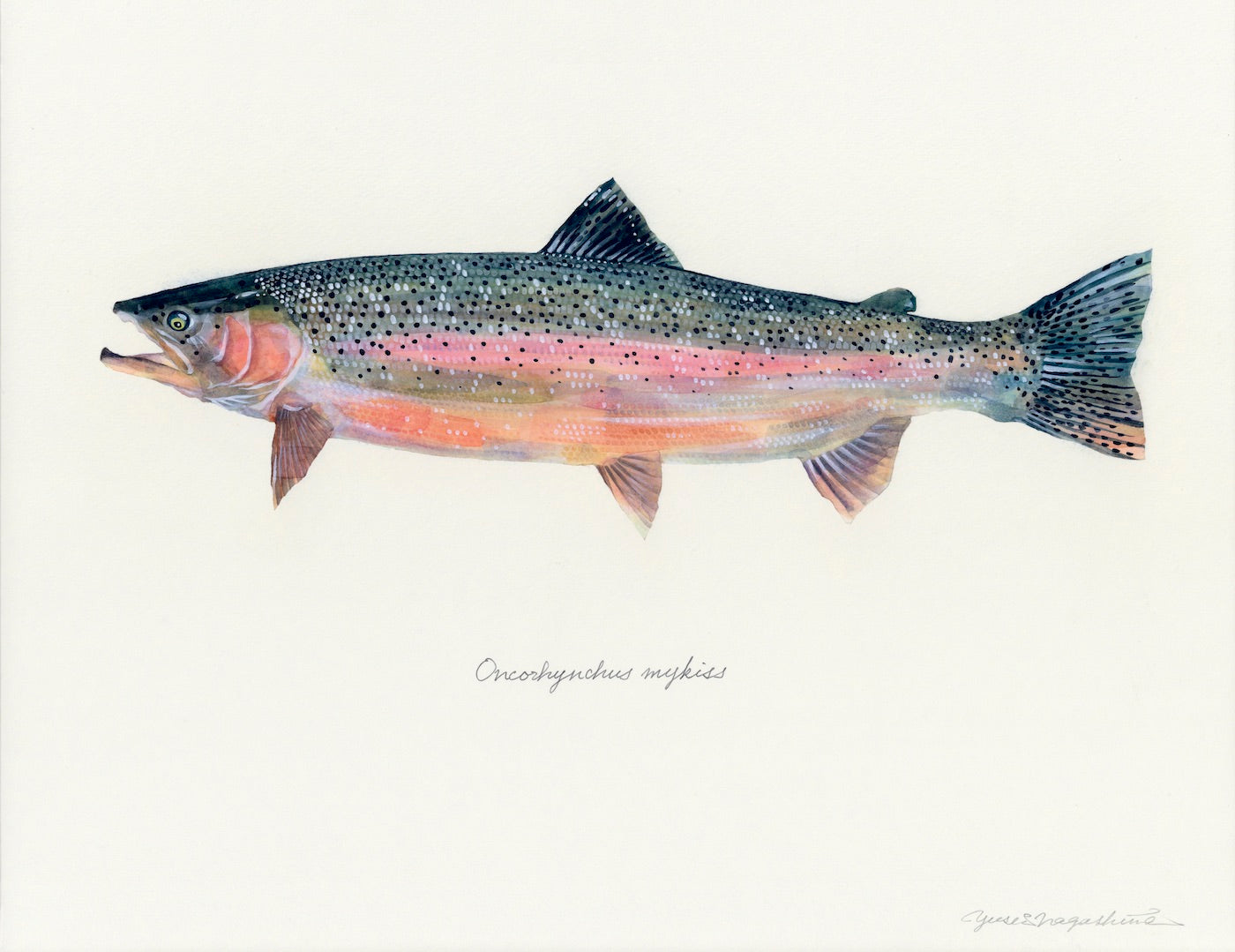Yusei Nagashima is a man who loves fish. The Japanese illustrator is known for his beautiful paintings, which layer pigments together resulting in dazzling portraits of fish from around the world. A selection of Nagashima’s striking pieces are featured in our new book The Fly Fisher. Get to know him in our interview below, or browse The Fly Fisher for a look at the growing community that the beloved sport has acquired.
What first drew you to fish and when did you begin painting them? Are they a recent fascination or a lifelong interest?
When I was about eight years old, the baby piranhas that I saw in a tropical fish store left a strong impression. Though they are often known to be brutal and ferocious, and they are spoken about as terrible monsters, I found them delicate and beautiful. This was the first moment that I realized I was fascinated with fish. I used to draw all sorts of living things from an early age, but I focused on fish ever since then.

Do you fish yourself? Do you have any exciting stories?
I love fishing, and my favorite memory is from when I was about 12 years old. I used to go fishing with my father almost every weekend. One night, we were enjoying fishing as usual, something suddenly dragged my rod into the see. My favorite rod: drowned and dead. I felt frightened and disappointed.
After a while, my father fished out a conger eel from the sea. There was an extra fishing line in its mouth, and its other end was still in the water. As I drew the line in, my rod came back to my hand! It was an impressive experience during which I felt both great fear of and respect for the depths of the ocean.

Do you have a favorite fish to paint, and do you have a favorite fish in general?
My favorite to paint are blue-black fish, such as sardines and herrings. I love their glittering scales. In general, I love mackerels. I draw them, paint them, fish for them, cook them, and just look at them: the beautiful patterns on their back, their powerful muscles, their lovely facial expression, and their delicious taste are all appealing.
The fish you paint often vary in size, shape, and scarcity—how do you manage to maintain a beautifully standardized style?
I use the same techniques to paint any fish. First, I look at its parts carefully and deconstruct its colors based on my color palette. Next, I paint each color using a wet-on-dry method. By overlapping the deconstructed colors, the final palette emerges. What I keep in mind is not to be consumed by reproducing the object as it is in front of me, but to express it exactly as it felt in my mind.

Where do you source the specimen that you paint?
The best specimen for me is a lively image in my mind from touching real specimen or a picture I took myself. However, sometimes this is impossible. In that case, I collect reference materials, such as photos and movies, from books and websites. I don’t reproduce the images as they are in the material, but create and express the impressions in my mind.
What can we, as people, learn from fish and from nature?
It is that we are always living inside of nature.
Those of us who live separate from nature, especially in big cities such as Berlin or Tokyo, tend to think something like, “Nature is something that needs to be touched in our leisure time,” or, “Nature is something that we must protect”. However, in reality, there are no clear boundaries between our lives and nature. Even big cities exist entirely within nature. Though we live in it, we cannot see it. Living inside of nature isn’t just touching it when we have a moment, nor protecting it carefully. Rather, we must push back against nature sometimes, and sometimes we must care for its fragility. We must think about our position as hums in nature and we should live alongside nature. I think fish and fishing reveal such relationship.











